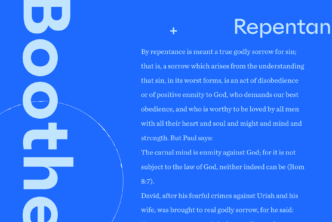
In 2009, Justin Taylor on The Gospel Coalition mused, “I wonder how Longman would address the commonsensical point made by N. T. Wright,” in which Wright suggests that Paul clearly believed in an historical Adam and Eve, but viewed it in light of the “mythical or metaphorical dimensions to the story.” We asked Dr. Longman to respond to this question. See Taylor’s original post, “Tremper Longman on the Historicity of Adam.”
In the first place, I know that Adam is referred to in important places such as Romans 5:12, but the first thing I think we need to realize is that Genesis 1 and 2 are not interested in telling us how God created creation. It’s rather telling us that he did it, as well as a lot about who he is and our relationship with him. I’m not saying it’s not historical—it is. I consider this theological history. But the difference between Genesis 1–11 and Genesis 12ff is that the history as it’s recounted in Genesis 1–11 isn’t intended to be read strictly literally and precisely. We see that by all the use of figurative language, the lack of sequence-concord between creation accounts, and the interaction with ancient Near Eastern texts—not that they’re borrowing it, but they are interacting with it and actually polemicizing against it.
If that’s the case, then it’s okay to look to science in order to see what they’re saying about it. I’m not saying that we have to accept science, that science is always right, that it stays static, or anything like that. But it seems to me that there is a good case, especially based on the genetic evidence, that God used evolution. So I find myself affirming an evolutionary creationist perspective.
This raises a question about the historical Adam. In my conversations with biologists—and I’m talking about Christian biologists, such as Dennis Venema, Francis Collins, and Jeff Schloss at Westmont—and in my reading, the evidence suggests that evolution doesn’t work by starting with a single pair, but instead goes back to an original “breeding population” of between 5,000 and 10,000 people. That raises a question about possible conflict between science and the Bible. And don’t get me wrong—if the Bible says one thing and science says another, I’m going with the Bible! But on the other hand, I think that we should first ask, “Are we understanding the Bible correctly by insisting on this?” It’s often pointed out that this is the fundamental error that happened in the time of Galileo. Sometimes science can refine our understanding of the biblical text.
To me, it’s a question of whether I turn to my Christian biologist friends and say, “You’re in error because you’re teaching this,” or if I, as a biblical scholar, let them, as biblical scholars, have the latitude of teaching it. But it does raise the question of how we’re to understand Adam and Eve.
There are basically four positions on this. The first one is Young Earth Creationism: Adam and Eve were the first pair. And then there’s the Old Earth Creationist point of view as well: Adam and Eve were the first pair, but they were created a number of years earlier. Somebody like Tom Wright argues, based mainly on Paul’s use of Romans 5:12ff, that Paul regarded Adam and Eve as a historical couple. Now Wright’s view, as I understand it from conversations with him, is that he’s not adopting a similar position to the first two I just described, but rather that Adam and Eve are kind of a representative couple within that breeding population. They’re not alone. And actually, that helps explain certain features of Genesis 1–11, like who Cain married, who Cain was afraid of, and those kind of things. So that’s his view: they were an actual representative couple, like the queen and the king. Or we could conceive of them as the priest and the priestess, since Genesis 1 and 2 also talk about the cosmos using a kind of temple language.
And that might be the right solution. But I would also allow for the possibility that Adam and Eve are representative of that original couple. What I would insist on—remember, I think this is history, in the sense of talking about things that actually happened—I would insist that at some point in the evolutionary process, we’re now talking about a time when human beings have become conscious and capable of moral choices. We would describe them as innocent until they sinned. And I would also insist, because I think this is in keeping with the genre of Genesis 3, that there was a historical fall. I think those are important teachings of Genesis 1–3.
Now in terms of Romans 5:12 and following, I do think that it is possible—and I would suggest likely—that as Tom admitted in his quote, there are figurative elements, and that Paul would have recognized the figurative elements in the depiction of Adam. I would also point to another prominent New Testament scholar, James Dunn, who says that it’s patronizing to think that Paul had to think that Adam and Eve were an historical couple. There are other first century examples of this, using characters in a kind of archetypal way.
My good friend John Walton will say this about Adam, that Adam was an archetypal figure. And his next statement is that archetypes can be historical, like Melchizedek in the book of Hebrews. I agree that Adam is an archetypal figure, but my next statement is that Adam doesn’t have to be historical. I’m not insisting that Adam’s not historical, I’m just saying that if it turns out that he’s not, then it’s not going to undermine the truth of Genesis or Romans 5:12 and following.
* * *
Disclaimer: Logos Bible Software provides resources for everyone who studies the Bible. Guest posts reflect the views of their authors. You can read more about our publishing philosophy.




